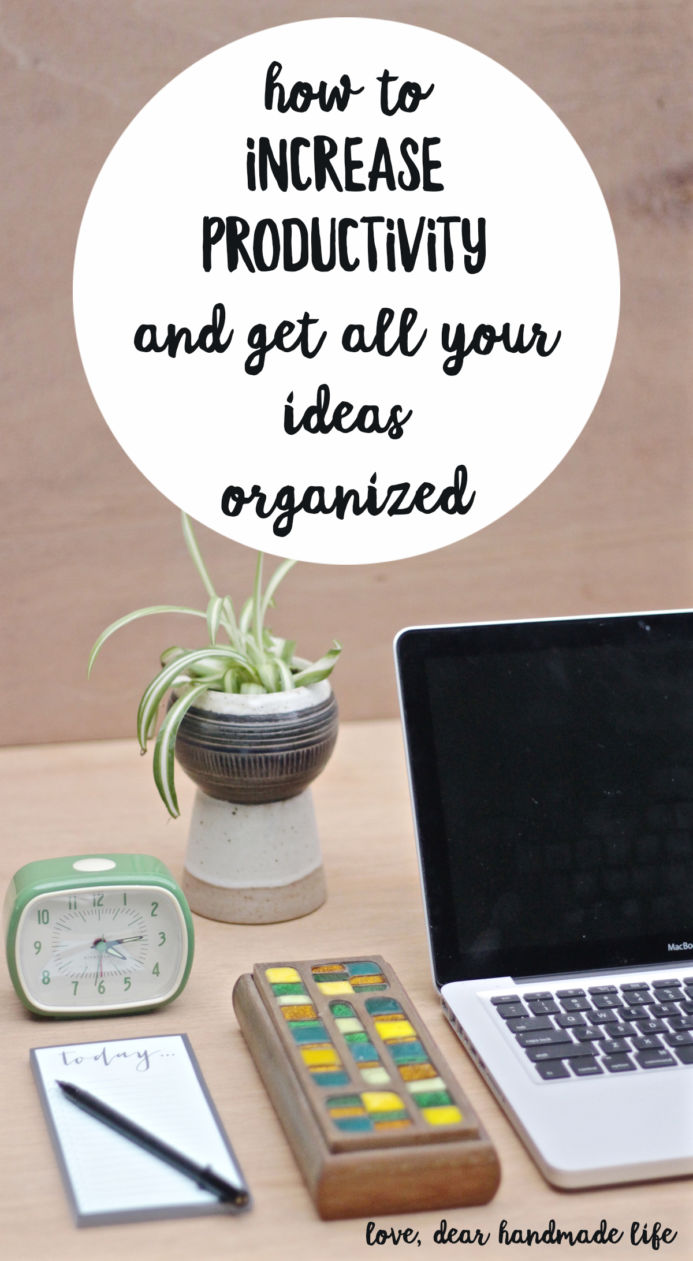How to Simplify and Organize your Writing Process to Unearth your Best Ideas
Whether you’re writing for your blog or social media accounts, web-copy for your store listings, crafting pitches to the press, or jotting down ideas for new projects or products while out in the world, you inevitably spend a good deal of time creating content when you are running a business.
At times, I find myself at a loss of making sense of my writing drafts, ideas, pitches, and lists of, you know, everything—projects I want to get to, blog posts, articles, and books I want to write, and those I’ve actually completed. These all exist entirely in Evernote, except for the things that are in Google Docs or the sentences and bits on my iPhone Notes app. Oh, and then there are the lines I have emailed myself. See what I’m getting at here? It’s no wonder that I am swimming in overwhelm when it comes to my creative projects. On an almost weekly basis, I rediscover mostly-finished pieces that just need a bit of editing here or there. I am triggered by an idea in the waking, physical world and remember I have written that thought already and pitched it to five places with no response (cue the crickets) before it died a fast, digital death. (I should really take my own advice and pitch that piece again.)
I recently read two pieces that, together, meet somewhere on the venn diagram of creativity, organization, and minimalism when it comes to creating and managing content, and have inspired me to get back on track: Marie Kondo’s Spark Joy, a follow up to her somewhat eccentric and extremely popular The Life-Changing Magic of Tidying Up, and Ryan Holiday on the lost art of reading. Thanks to some of their suggestions, I’d love to share some tools and methods that are working well for me, lately:
Embrace pen and paper.
I purchased a couple of legal pads (which the initial draft of this very post was written on) to move my writing off the screen. The process of writing by hand, with a pen and paper, is actually making me write more. I keep one at my bedside and one at my work desk in the kitchen, which are to the two rooms I spend most of my time in. With a tomato timer as my answer to all my excuses as to why I can write that thing later—I set the clock for 25 minutes, put my phone to airplane mode, and write. On paper. It’s about as distraction-free as you can get.
Take notes.
Mr. Holiday outlines his simple process for research and writing, note-taking on index cards, which is really the same thing we did when we wrote research papers in the sixth grade for those of us who came of age pre-computer in the 90’s or earlier. I’ve been following his advice for a few weeks now, scribbling passages from my reading material or my own original idea, thought, or image I want to hang onto and remember. I love this strategy because it’s making me read with purpose (and a tangible stack of notes that I can physically sort into categories or topics later). Edith Wharton believed in a similar sort of active reading: she would write in the margins of the page, recording her immediate responses to the text, questions for further exploration, and underlining lines and quotes that spoke to her.
Revisit your best ideas.
I have yet to tackle my digital black hole (the oodles of files in the cloud and on my computer) but at least I know that moving forward, I’ll be confronted with the physical object of my drafts, and forced to reckon with them, in hand, to figure out a next step for each and every one of them. “What matters,” says Ms. Kondo, “is the ability to see where everything is stored.” That’s a start, sure, but I’d add to that by saying you also must carve out time to revisit your best ideas. Ms. Wharton knew this—she would spend her evenings re-reading and re-considering her scribbles, imprinting her ideas into her mind and disseminating them into her body of work (and dinner conversation, most likely). If it’s worth noting, it is worth circling back to again.
How about you? Do you have any go-to tools or processes for managing your ideas, schemes, drafts, and plans? We’d love to hear in the comments below.
-Rebecca Pitts
Rebecca Pitts is a writer, maker, and founder of Hudson + Daughter, a blog and shop that celebrates the handmade, crafting for the young at heart, and a purposeful approach to living a life of creativity and curiosity with kids.







